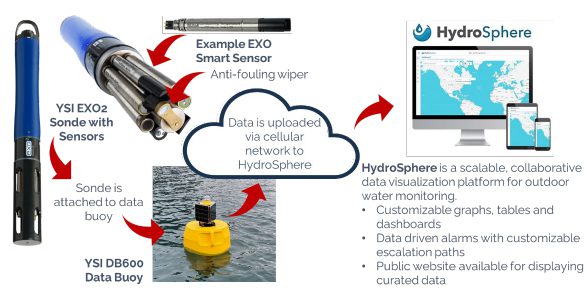The Chesapeake Bay Watershed has faced a long history of water quality challenges. Dedicated organizations fight tirelessly towards solutions by conserving natural areas, raising awareness, and championing technological improvements. High-quality data is crucial for making informed decisions for the river and communities that depend upon it. The WQDM Program’s goal is to help drive this effort forward by providing real-time monitoring data to the public.
The program will provide an open-source, real-time water quality data monitoring program to help increase frequency and ease of data collection and review. There are current efforts by Riverkeepers and other Conservationists to collect water quality data, but these efforts are decentralized, primarily volunteer-based, and lack consistent support.
This program will provide support to new and existing efforts for data collection, public outreach and education and coordination with community members on the status of our shared water systems.
Where is the data going to be collected?
10 monitoring sites along the Potomac, Shenandoah and Anacostia Rivers
The Reservoir Center and Partners are providing equipment and support for 10 monitoring locations along three of the major waterways within the Chesapeake Bay Watershed. The sites will include up to eight water quality variables for real-time monitoring and have been strategically chosen by the Riverkeeper and Conservationists to provide relevant data and a safe and convenient means of access.
How will WQDM collect real-time water quality data?
Real-Time Data Collection with EXO Sonde Platform multiparameter instrumentation.
Data will be collected every 15 minutes and uploaded to the HydroSphere platform automatically. The graphic below details the general process for data collection. The onboard telemetry system will collect data and push via cellular connection to the Hydrosphere site.

Who will maintain the systems?
The local Riverkeepers will maintain the equipment for the duration of the program.
Equipment maintenance and calibration will be managed by the Riverkeepers and completed by local non-profit organizations. The systems are designed to be deployed year-round. Maintenance will vary for each system and changes throughout the year. Equipment will be provided to the Riverkeepers to allow for lab calibrations and maintenance.

Projected Impacts and Applications
This project will impact the Baltimore – Washington, D.C. community and beyond. First, the data will support science-based decision-making and improvements, including the goal of achieving swimmable and fishable rivers. This program may also provide a means of tracking, modeling trends, and improving prediction capabilities to monitor the health of the broader watershed.
The data will also improve DC citizens’ relationship with its rivers through public education and awareness building, helping understand and overcome racial disparities. We also aim to engage youth through data-driven projects, such as data hackathons. university partnerships and education fairs.
